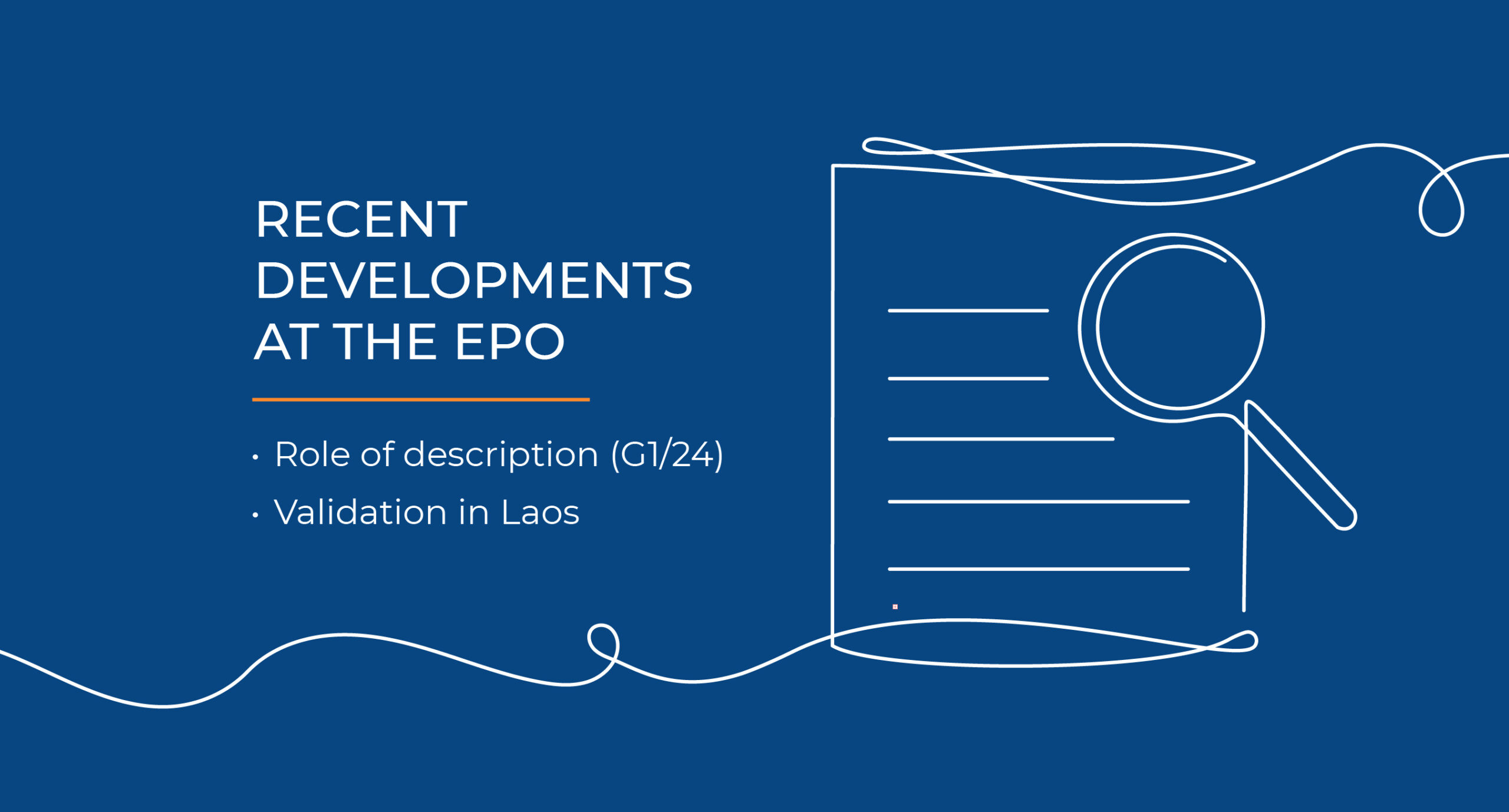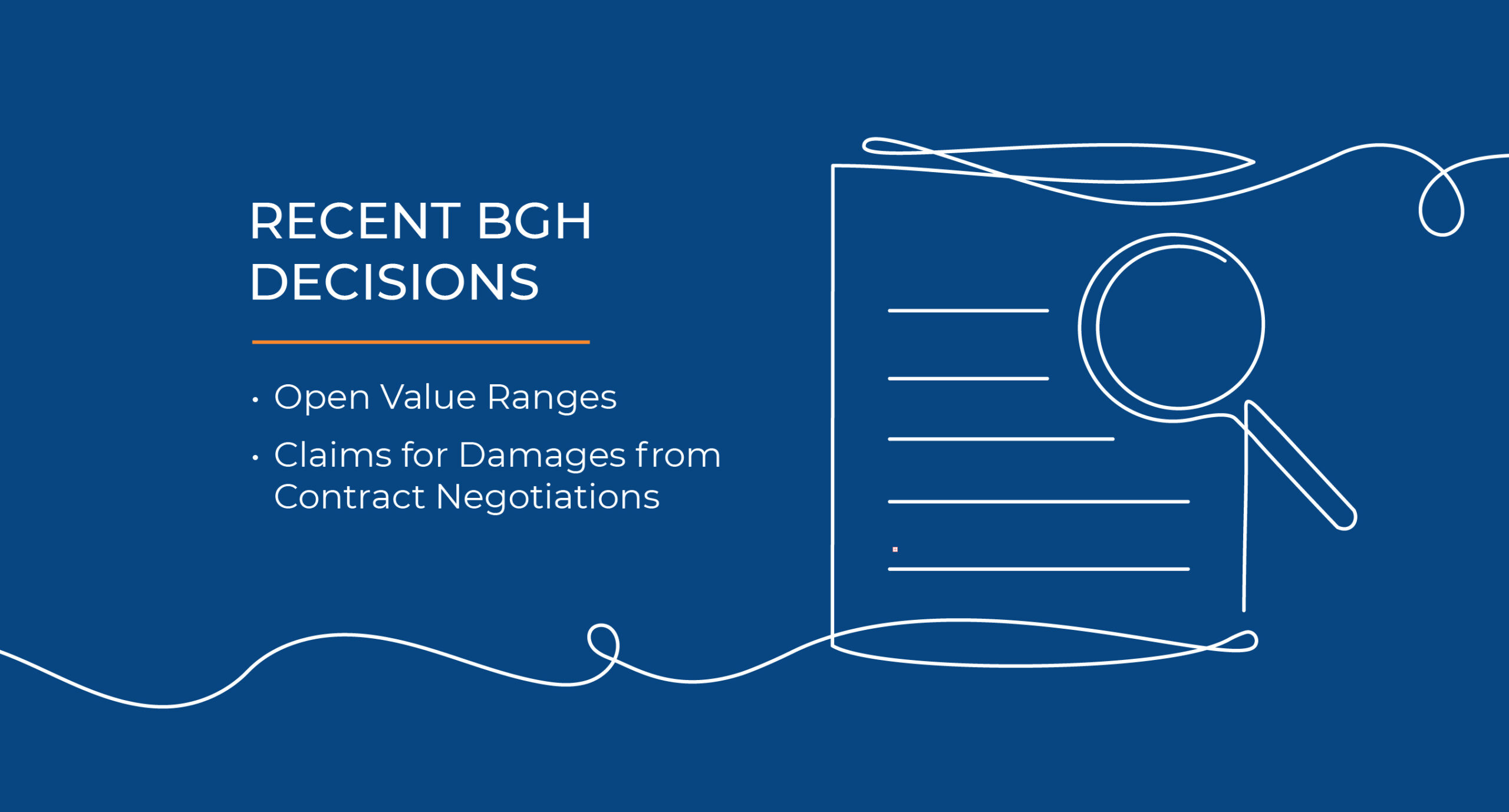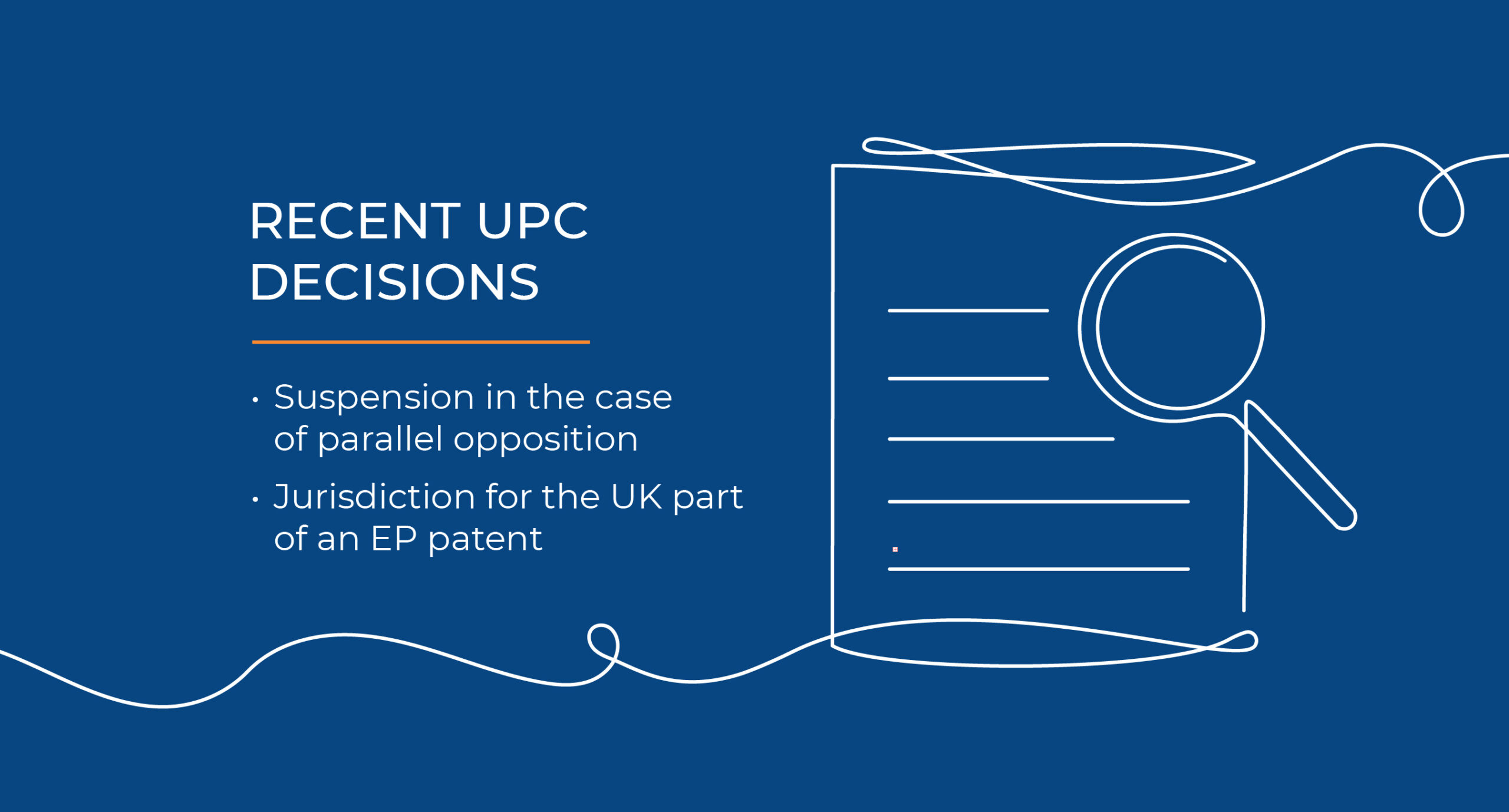Recent Developments at the EPO: Role of description (G1/24) and Validation in Laos
Share article
Role of description for claim interpretation – G1/24
In the very recent, long-awaited decision G1/21, the Enlarged Board of Appeal has ruled on the question of interpreting the claims during the assessment of patentability, e.g. in examination or opposition proceedings. It had been a long-standing debate before the EPO about whether claims should always be subject to interpretation based on the description and drawings, or only in cases of unclear or ambiguous claims. For example, German national case law advocates for the claims always being subject to interpretation. The first rulings of the UPC seem to go in the same direction.
Now, the Enlarged Board of Appeal of the EPO has made clear that the claims are the starting point and the basis for assessing the patentability of an invention. In fact, the description and drawings shall always be consulted to interpret the claims, and not only if the claims are found to be unclear or ambiguous when read in isolation.
This decision leads to a more harmonized approach to claim interpretation during examination and opposition at the EPO on the one hand, and infringement and invalidation actions at the national courts and the UPC on the other hand. However, the decision is also believed to strengthen the EPO’s position regarding the requirement of adapting the claims and the description during examination in cases where there is room for a broader interpretation of the claims in view of the description.
Validation of EP patents in Laos
Since April 1, 2025, European patents can be validated in Laos. Protection can be obtained through European patents not only in the 39 EPC-member states, including for example Germany, France, the UK or Italy, but also in so-called validation states. Since Laos joined the list of validation states on April 1, 2025, there are now six validation states and one so-called extension state (press-release/2025/1358319; guidelines-epc/2025/a_iii_12_1.html).
If validation or extension is sought in one or several of these states, a request for validation or extension must be made and a validation fee is to be paid. Unfortunately, the decision regarding validation or extension cannot be made at the end of the examination proceedings but has to be made quite early in the application proceedings. The fee for European applications directly filed with the EPO must be paid within six months of the date on which the European Patent Bulletin mentions the publication of the European search report. For a PCT application, the request including payment of the fee has to be made when entering into the European regional phase.
Legal notice:
This report provides information on legal issues and developments of interest in the field of intellectual property. No claim is made as to the completeness of this report. This report does not constitute legal advice and no liability is assumed. Since intellectual property laws and systems are multi-faceted and intricate, we recommend obtaining professional advice regarding any problem or matter before taking action with respect to any information contained in this report.
If you have any questions or need support, please don’t hesitate to reach out to us. As a dedicated patent law firm, we’re here to assist you with your specific concerns and guide you through the legal landscape.

